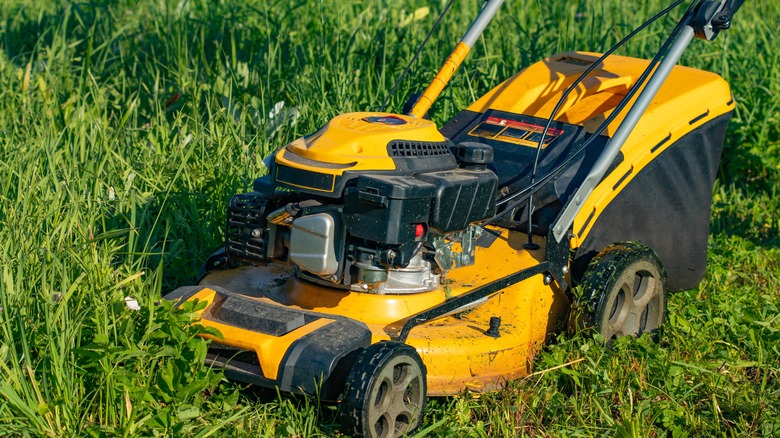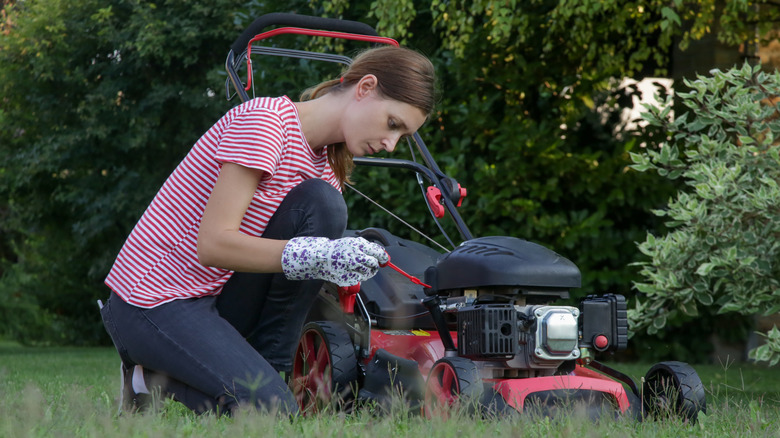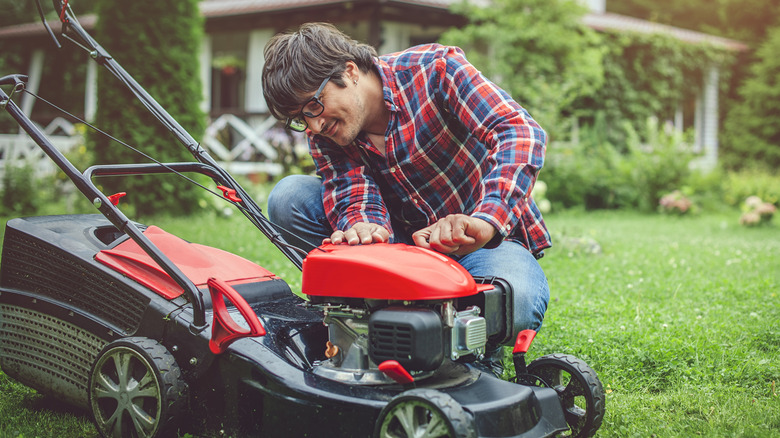Do You Need To Grease Your Lawn Mower?
Cars need at least six fluids for them to work, including the semi-liquid grease that lubricates their movable parts. Like cars, lawn mowers are highly mechanized, with their engines, blades, and wheels moving vigorously when in use. To reduce friction and wear between their moving parts and gears, lawn mowers also need greasing now and then.
One important part of lawn mowers that needs regular greasing is the deck spindles, which act as a hub that transfers the rotational force from the engine to the blades via a system of belts, pulleys, and bearings. Basically, each spindle supports a blade as it rotates. When the spindle and its components are not adequately lubricated, the unit can heavily vibrate, make excessive noise, overheat, and even fail. It goes without saying that the rotating blades will also be heavily affected. Any serious damage to the spindles can cause the blades to wobble or spin unevenly. Worse, the blades may not spin at all.
Other parts of lawn mowers — both push and riding models — that require greasing are the front axle pivots and wheel bearings. They need lubrication to ensure the smooth overall operation of the gardening equipment and prevent premature wear and damage from friction and rust.
How to properly grease a lawn mower
Regardless of brand or whether you are using an electric or gas lawn mower, you still need to grease your equipment regularly to keep it in tip-top shape every use. The Western Equipment, a YouTube channel that specializes in creating service and maintenance content for John Deere equipment, recommends using a standard grease gun with a hose to easily administer the lubricant and reach all the hard-to-reach areas of your lawn mower that need greasing without disassembly.
Application is as easy as pumping the lubricant on the different grease points of the mower, such as the axles and the deck spindles. You need to apply grease on each spindle so all blade assemblies can benefit from the lubrication. To determine if you put enough lubricant, pump the grease directly on the fitting above the spindle and wait for the fluid to leak below the spindle. Wipe the excess grease and repeat the steps for the rest of the spindles.
Different lawn mower brands offer different types and designs of lawn mowers. So, depending on the unit you have, you may need to lubricate more greasing points, such as pedals, control levers, and pivot points. If unsure where else needs some greasing, you can check out the user manual that came with your unit for guidance.
What type of grease should you use on a lawn mower?
When looking for a lubricant for a lawn mower, some would say a multi-purpose lithium grease is a good choice as it is compatible with various gardening and agricultural equipment. However, more often than not, multi-purpose grease is only for general applications as it cannot withstand extreme and prolonged high temperatures. To be safe, it's better to consult your equipment's user manual since this is where the manufacturer names the type of specialized lubricant that works well for your lawn mower's design and features. Choosing the right type of grease, regardless of brand, will spare you from unwanted problems you'd have to deal with if you used the wrong type of lubricant.
Interestingly, it's possible to use WD-40 to grease your lawn mower. The multi-purpose product has been doing wonders for car maintenance for decades, acting as a degreaser and rust-prevention solvent, among other things. The WD-40 Company itself recommends its product for use as a lubricant and cleaning solution for lawn mowers on its website. However, apart from cleaning and lubrication, you can also use WD-40 to extend the life of your lawn mower. Routinely spraying it on the metal parts of your grass cutter will prevent rust and corrosion. Additionally, spraying it on the air filter will prevent dust accumulation, so your lawn mower can perform efficiently for longer.


